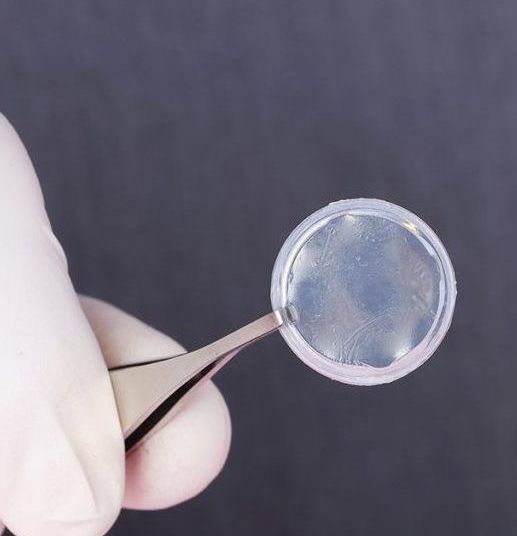DRY EYE DISEASE
We provide a wide range of services to manage dry eye, including the newest treatment for ocular surface disease: the use of an Amniotic Membrane Allograft called Prokera®.
PROKERA®
PROKERA® is a type of amniotic membranes our office uses for ocular surface disease. It is a device used by eye doctors around the world for anti-inflammation, anti-scarring, and the promotion of healing damaged eye surfaces. Prokera is the only FDA-cleared cryopreserved amniotic membrane. It has specific advantages, but ultimately supports the corneal-healing process without harmful side effects. It is made from amniotic tissue which has natural anti-inflammatory and anti-scarring properties. It provides quick symptom relief and reduces inflammation associated with ocular surface disease.
It helps restore your cornea and return your eye to a normal, healthy state.

'Healing Vision, Restoring Life'
Bio-Tissue created Prokera to leverage the potent healing properties of amniotic tissue that is responsible for regeneration. It is cryopreserved to retain key benefits of this tissue that include suppressing ocular surface inflammation, decreasing corneal scarring and angiogenesis.
What advantage does cryopreserved amniotic tissue have over dehydrated amniotic tissue?
Heat dehydrated amniotic membrane grafts are processed in a way that destroys crucial biologic components, increasing the risks for repeated epithelial defects or erosions, chronic inflammation, scarring, vision loss, or pain.
What is amniotic membrane tissue?
An amniotic membrane has biological properties that aid in tissue repair. These tissues have natural therapeutic actions that help damaged eye surfaces heal. Eyes treated with this technique generally improve significantly and have less scarring and inflammation. The amniotic membrane in very thin, typically less than 50 microns, and generally comfortable.
Amniotic membranes are harvested and must be in immaculate condition and taken without complications. The process of harvesting and processing these tissues is tightly controlled under heavy restrictions.
What does PROKERA treat?
These medical devices are used by eye doctors to treat ocular surface diseases such as keratitis, corneal scars, chemical burns, corneal defects, partial limbal stem cell deficiency, Simplex keratitis and many other ocular surface diseases. They are provided by a tissue bank regulated by the FDA. The tissue has passed multiple severe quality control tests before being provided to your doctor. Ask your doctor if you are concerned about the risks involved with using human tissue. Here are some of many conditions Prokera can help with:
- Dry Eye Syndrome, Exposure Keratopathy
- Filamentary Keratitis
- Infectious Keratitis
- Neurotrophic Persistent Corneal Epithelial Defect
- Recurrent Corneal Erosion
- Corneal Ulcers
- Pre-Cataract Optimization
- Chemical burns
- Post-DSEK for Bullous Keratopathy
- Salzmann’s Nodular Degeneration
Are Amniotic membranes safe?
Prokera is a safe treatment provided by an FDA regulated tissue bank. The tissue is donated from consenting, healthy mothers who have had an uncomplicated C-section. The donor and tissue have passed numerous quality control tests including social habits, physical and medical screening before it is provided to your doctor.
What should you expect?
PROKERA is similar to a large contact lens. You may experience an awareness while inserted, but they are not normally painful and generally comfortable. The amount of time the Prokera is inserted in your eye depends on the level of severity of corneal disease, but typically is from 2-5 days.
Special instructions for amniotic membrane use:
- Avoid rubbing your eyes, forceful blinking, or moving the membrane with your fingers
- Do not remove the membrane without consulting your eye doctor first
- Do not swim or soak your eye with water
- Shower only when the eye is tightly closed
- Do not drive or operate heavy machinery or perform functions that require unobstructed vision or good depth perception
- Use eye drops and other medications as prescribed by your eye doctor
Contact your eye doctor right away if you are uncomfortable or have any other problems with either device, such as swelling, redness, or discharge.
Contact Information
Phone: (412) 741-6776
Fax: 412.741.1390
Business Hours:
- Mon - Fri
- -
- Sat - Sun
- Closed
1099 Ohio River Boulevard Sewickley, PA 15143
Ophthalmology Associates of Osborne